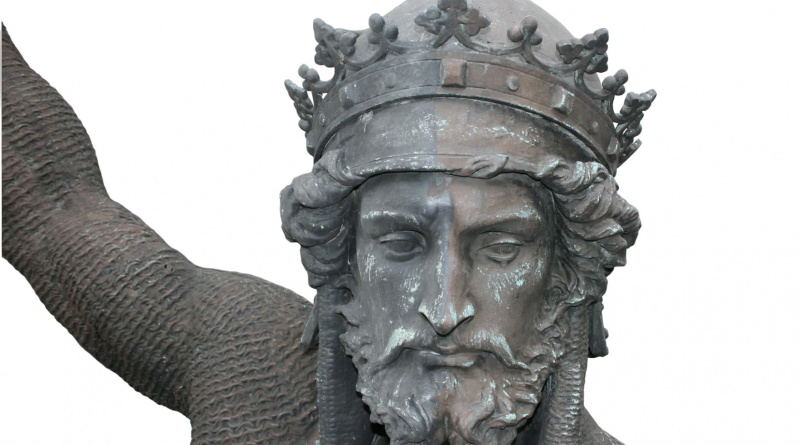Richard I – His life and coinage
On 6 July 1189 Henry Plantagenet, King Henry II of England, died at Chinon in France. After his many achievements, the latter part of his reign was marred by conflict not with troublesome lords but with members of his own family. Henry had not named his successor but the throne passed naturally to his eldest surviving son, Richard I.
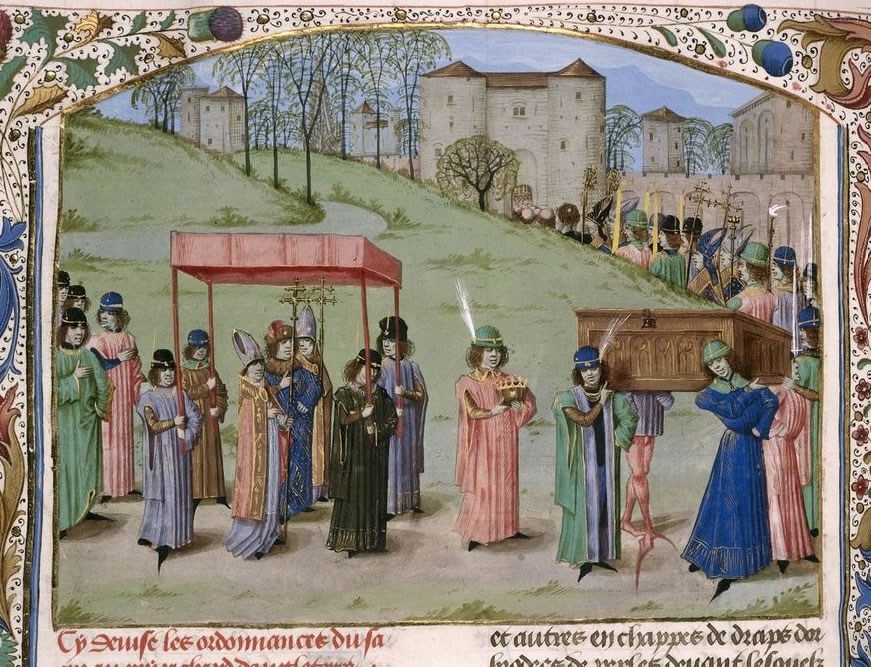
The new king, who had rebelled against his father, knelt only briefly beside Henry’s body before turning to the duties of his realm.
Richard had many faults but his leadership qualities in battle were second to none. In both England and elsewhere he was known by his contemporaries as Coeur de Lion, which is a far more impressive title than many other European kings have had pinned on them. All the Norman kings and Henry II had spent much of their time across the Channel, defending or simply governing over their lands. The people of England might have hoped that Richard I would concentrate more on their country. However, if this was the case then the passing of time would dash their hopes.
The changing face of England
Castles
Immediately after the Norman Conquest castles were erected by the new rulers. Most were fairly simple wooden structures on raised mounds of earth but by the time that Richard I came to the throne stone had replaced wood. Castles were dotted about the country and more would be built in the succeeding years.
Churches and Abbeys
The Normans were great builders but not all their projects were for military purposes. Religion was taken very seriously and the great landowners believed they had a better chance of a contented afterlife if they financed the erection of churches and abbeys. Some of the great abbeys still stand today, albeit mostly in ruins. Then there were the cathedrals, towering up in majesty towards the sky. These buildings still impress us today but in the 12th century those who cast their eyes on them must have been awestruck.
New towns
Between 1066 and 1230 no less than 125 towns were founded in England, including Arundel, Boston, Chelmsford, Kingston-upon-Hull, Lynn, Morpeth, Newcastle-upon-Tyne, Portsmouth, Reigate, Uxbridge and Watford. The driving force behind this came mostly from wealthy landowners, bishops, abbots and lay nobles. People were encouraged into new towns by the privileges and liberties offered by the founders. For example, burgesses (small landowners) held their property by ‘burgage tenure’, a fully-free title that was very close to absolute ownership.
Over time the towns eventually became free from the control of royal or feudal agents. One historian described them as non-feudal islands in the feudal sea. Some were granted the right to hold fairs and the larger ones at Boston, Winchester, Lynn and Stamford lasted for weeks. Ranulf Granville, the great lawyer-minister of Henry II, wrote that if a serf dwelt unclaimed for a year and a day in any chartered town, and was received into the community or a guild within that town as a citizen, then he would become a free man. The medieval saying “Town air makes you free” stems from this ruling.
Flourishing ecconomy
The wool trade was flourishing and expanding, with a great amount being exported to Europe. Cloth was also exported, as was tin and lead. All in all, by the 1190s the look of England had changed, the economy had expanded and the country had gained the respect of most European countries. However, the ruling class still spoke French, the clergy conversed in Latin, and English was still looked upon as the language of the lower orders.
Coinage of Richard I
The voided short cross coinage, introduced by Henry II, continued through the reign of Richard I. Not only did the design of English coins remain the same but so did the name of the king. On the obverse, instead of RICARDVS, the legend starts with HENRICVS. One theory is that in 1189 English currency had a high reputation in Europe; it was known to be of the sterling standard (.925 parts silver out of each 1000), whilst the currency of some other countries wasn’t.
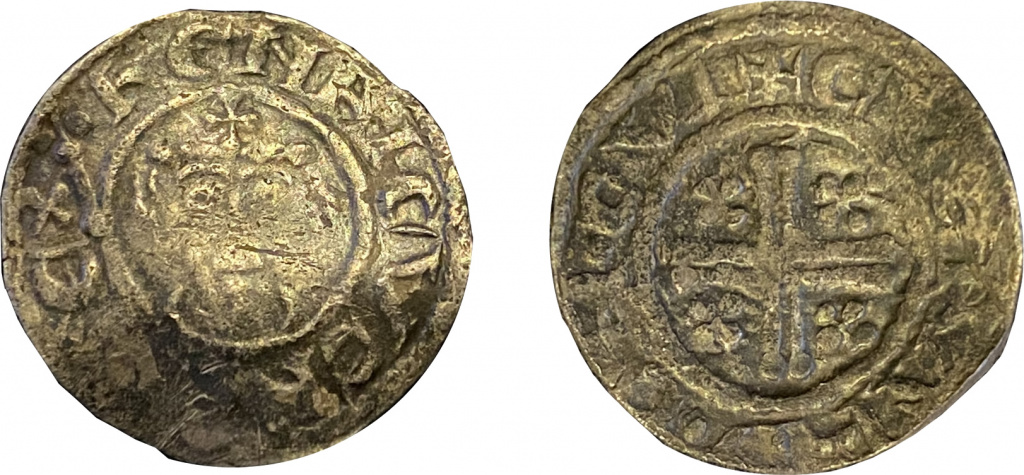
Therefore, officials of the Exchequer decided to still have coins issued bearing the name of the king who had died in 1189. An example is this find of Tom Burton, sent into the website in 2021.
The main mints were London and Canterbury but to facilitate the swift circulation of currency several provincial mints also stuck coins. By far the rarest mint is Lichfield, where a single moneyer struck pennies during the reign of Richard I.

Photo: © Noonans
The only coins bearing the name of Richard I are Anglo-Gallic deniers and oboles struck for Aquitaine, Poitou (Pictaviensis) and Issoudun in France.
Some were struck when Richard was Duke of Aquitaine, others after he became King of England.
The Third Crusade
Saladin
The First Crusade had established a Christian kingdom at Jerusalem, which was defended by the military orders of the Knights Templar and Hospitalers. The fact that it had continued to exist was mainly due to disunity amongst the surrounding Moslem lands. However, a great Moslem leader rose up, in the shape of Saladin. His conquests led to anxiety amongst the Christian community in Jerusalem. The King of Jerusalem, Guy of Lusignan, offered the crown to Philip of France and then to Henry II of England but measures were not taken in time.
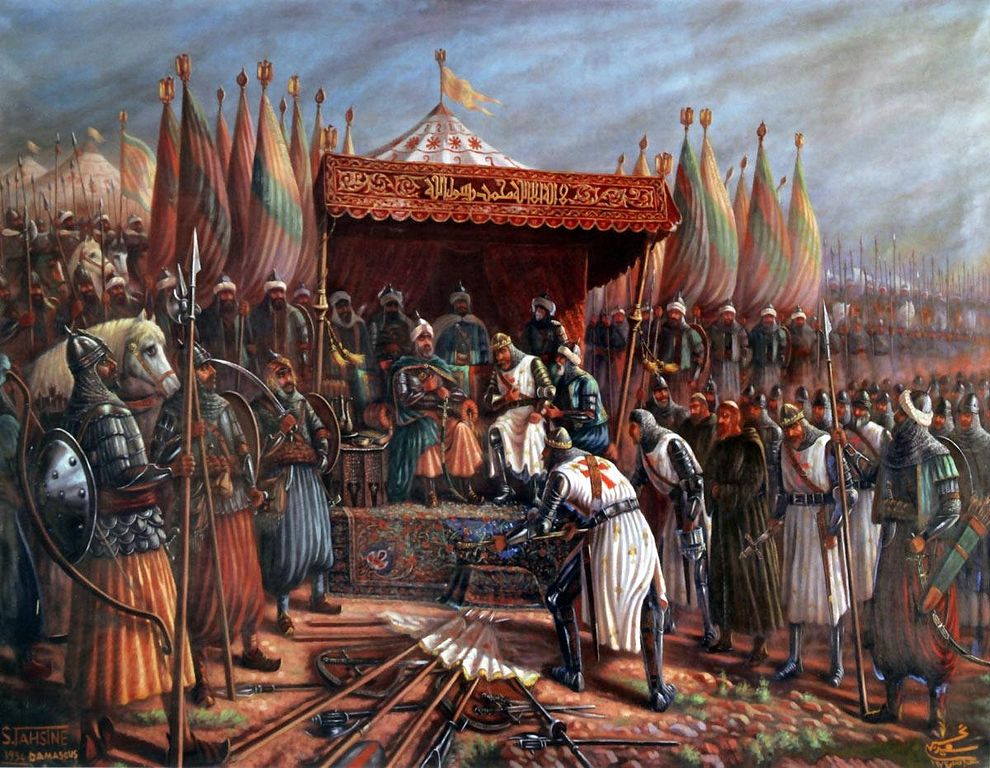
Painting by Said Tahseen (1904-1985 Syria), Public domain, via Wikimedia Commons
Saladin proclaimed a Holy War in 1186, promising his followers adventure and booty. The army sent against him was cut to pieces and those of its leaders still alive were taken prisoner. In October of 1187 Jerusalem surrendered and this left only Tyre, Antioch and Tripoli in Christian hands. Shockwaves spread throughout Europe.
Pope calls for a Crusade
The Pope sent legates to all the main European Courts, seeking support for a war against infidels. Amongst many others who answered the call, the kings of France and England agreed to mount a joint Crusade. The largest army ever brought together headed by various routes from Europe to the Holy Land.
Financing the Crusade
Even though the people of England had hoped that Richard would concentrate on their affairs, most understood the Crusade was a sacred enterprise, which might bring the blessing of God upon them. There were men wiling and able to join the Crusade. However, a great deal of cash was needed to finance it. Taxation demands were heavy and Richard sold and resold every office of State. ‘Scutage’, a money payment in lieu of military service under the feudal system, and ‘carucage’, a tax on every hundred acres of land, provided yet more cash for Richard’s war chest. The government of England was entrusted to William Lonchamp, Bishop of Ely, and Hugh de Puiset, Bishop of Durham, both under the supervision of Eleanor of Aquitaine. Richard departed late in 1189.
Richard marries
The English and French armies wintered in Sicily. Philip of France wanted Richard to marry his sister, Alice, who might have been the mistress of Henry II. Eleanor of Aquitaine then arrived in Sicily with an alternative bride, Berengaria of Navarre. Furious at this turn of events, Philip and his army sailed direct to Acre. Richard, together with Berengaria, left Sicily in April 1191. He paused in Cyprus, fell out with its ruler, conquered the island and married Berengaria before moving on to the Holy Land.
Holy Land
On 9 June he and his followers arrived at Acre.

Richard led from the front and five weeks after his arrival the two-year siege of Acre ended. Negotiations with Saladin had failed and two thousand Muslim hostages that had been held as guarantee of peace were slaughtered. Richard’s prowess was the talk of all nations.
Guy of Lusignan was in dispute with Conrad of Montferrat for the crown of Jerusalem. Richard backed one and Philip of France the other. After a compromise was reached Philip headed home and so did Duke Leopold of Austria, both of whom were at odds with Richard.
The Crusaders scored a significant victory at Arsuf under the leadership of Richard but the Moslems still held Jerusalem.
A three year truce was eventually negotiated, through which small parties of Crusaders could visit the Holy Sepulchre. The quarrel between Conrad and Guy was settled when the former was murdered by members of a Moslem sect and the latter purchased Cyprus from Richard.
Back to England
Late in 1192, after receiving disturbing news from England, Richard set out for home. After his ship was wrecked in the Adriatic, he decided to head home through Germany in disguise. However, he fell into the hands of the Duke of Austria, with whom he had fallen out whilst on the Crusade. Richard was then given over to the Holy Roman Emperor, who demanded an enormous ransom for his release.
Administration of the realm
William Longchamp

Cassell’s illustrated History of England, 1865
William Longchamp, already Bishop of Ely and a Papal Legate, swiftly side-lined Hugh de Puiset and became Justiciar (chief officer or deputy of the Crown) and Chancellor of England. He moved about the country in great splendour and was at first envied but soon hated by all the great barons.
Prince John tries to seize the throne
Longchamp saw that the chief danger to Richard came from his over-mighty brother, Prince John, who held a vast amount of land, together with the honours of Lancaster, Wallingford, Eye (for this refer to the Norman kings) and Peverel. In these areas he was a law unto himself and gave no account of his revenue to the Royal Exchequer.
In 1191 there was a crisis. A revolt of John’s supporters in the Midlands led to Longchamp marching against them. Around the same time Richard had sent home Walter de Coutances (a Cornishman!), who was Archbishop of Rouen, to watch over his interests. The archbishop fell out with Longchamp, who then fled from the country and Walter de Coutances took over.
With Richard out of the country Philip of France saw an opportunity to drive the English out of France. John was a willing partner in this and agreed to raise a revolt in England whilst Philip mounted an attack on Normandy.
At a moment of extreme danger, early in 1193 news reached England that Richard I was being held prisoner in Europe. John took up arms, announced Richard was dead and claimed the crown. Support for Richard came from many quarters, including the Church, Walter de Coutances and Eleanor of Aquitaine. Preparations to guard against a French invasion were set in motion and John’s forces melted away. When an announcement was made that Richard was alive his brother swiftly departed for France.
The ransom
The ransom demanded for the release of Richard was £100,000, a figure equal to twice the annual revenue of the English Crown. Philip and John offered the same sum for Richard to be delivered into their hands. Fortunately, the emperor believed he was honour bound to reject their offer. The size of the ransom was staggering. The Church donated money and treasure and laymen had to give a quarter of their ‘movables’.
Richard released
John took care to collect every penny that was due from all his holdings and promptly pocketed all the takings. There were three attempts to collect the ransom but the sum scraped together was still short of the £100,000 demanded. However, the Holy Roman Emperor, believing that he had extracted as much as he was likely to get, decided to release his famous captive. Richard took more care on his journey back to England. He avoided France and arrived back in London on 16 March 1194, where the impoverished citizens rejoiced at seeing him.
Hubert Walter
The See of Canterbury was vacant from December of 1191 but in May of 1193 Hubert Walter was appointed as Archbishop.
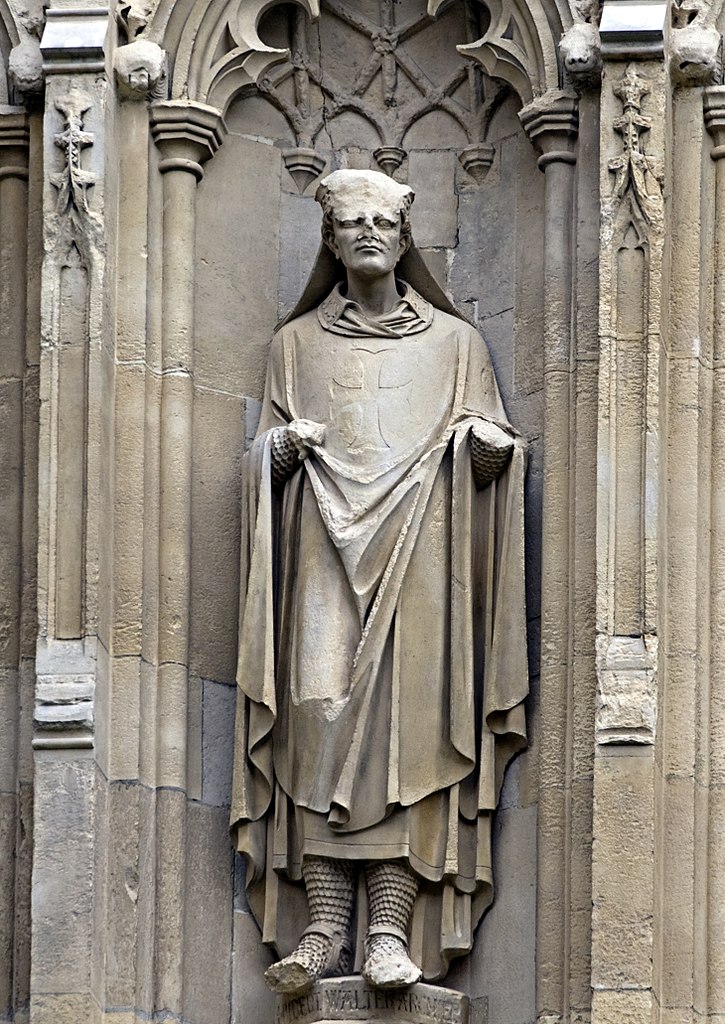
Photo: Ealdgyth CC By SA3.0
He was not a particularly religious man but through his administrative skills he became an influential royal advisor. He had served Henry II in his financial affairs, in diplomacy and in judicial innovations. Walter had accompanied Richard I on the Third Crusade and put in a great effort to raise the money demanded for his ransom.
Besides being Archbishop of Canterbury, he replaced Walter de Coutances and became Lord Chancellor and Chief Justiciar until 1198. With Hubert Walter in charge Richard could feel confident that the government of England rested in safe hands.
However, in July of 1198 he resigned his secular posts and Geoffrey Fitz Peter took them over. The resignation might have been demanded by the king because he was dissatisfied with Walter’s efforts at raising taxes, or might simply have been because the archbishop wanted to concentrate more on his spiritual duties.
More conflict
Early in 1194 John was again in open rebellion, having seized castles and raised forces with aid from France. The forces already sent to suppress the revolt were joined by Richard, which led to John fleeing yet again to France. In London Richard was crowned for a second time, in a ceremony even more elaborate than the first time.
Richard’s first priority was to defend his possessions in France, with which England was now at war. More taxation was needed to raise the money for arms and men. When everything was in place Richard left Hubert Walter as his deputy in England then crossed over to France and never set foot in England again.
Every year a truce would be negotiated and every year it would be broken. Until 1197 the war was made up of parlaying and skirmishing but in that year a pitched battle led to a rout of the French army. By 1199 most of Richard’s possessions in France were secure but the financial cost was great.
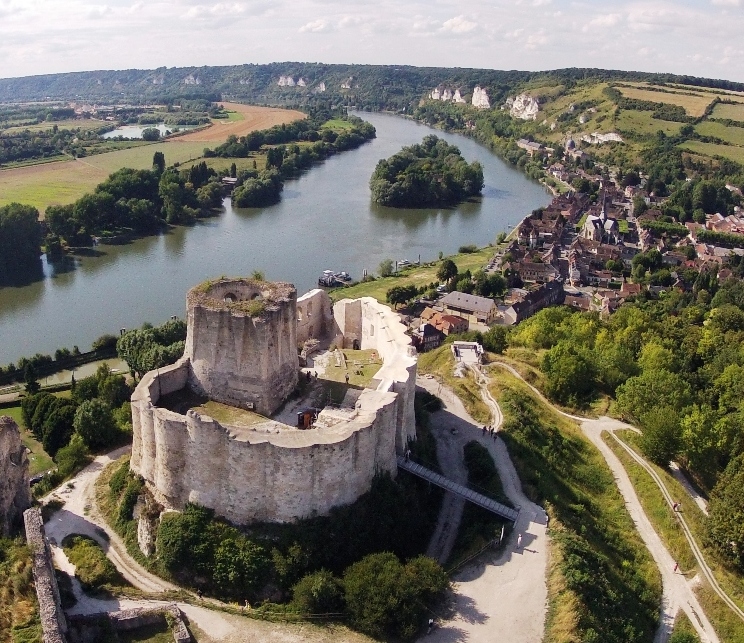
Borders had been strengthened and new castles had been built, including Chateau Gaillard, which Richard claimed to be the strongest fortress in the world. King Philip said that if its walls were made of iron he could take it; to this Richard is supposed to have said: “It they were of butter I would hold it.”
The war had created a need for endless taxation and the success in France had been extremely costly to England.
Land, class and careers
Land ownership
After 1066 the Anglo-Saxon landowners were gradually dispossessed of their property. By the time that Domesday was compiled in 1086 the king and his family held about 17% of the land in England; archbishops, bishops and abbots about 26%; and the tenants-in-chief and other landowners 54%. Some of these holding were huge, with a dozen leading barons controlling about 25% of England. Most of the landowners were Normans, with a tiny minority of Anglo-Saxons and Danes.
Class system
For some time the baronial class could be defined as a ‘closed shop’, for marriage was restricted to those of the same status. There was the ruling class and ‘the rest’. This is not to say there were no ‘in betweens’, for there were some – such as merchants, lesser knights and those who administered the estates of the landowners.
Additionally there was what could be described as ‘the gentry’ (free men with some wealth), who were compelled to defend the king’s judicial and financial rights in the shires, which is a sign that a middle class had developed and was being put to use.
Law of primogeniture
The law of primogeniture stipulated that when a landowner died then the whole of his estate would be inherited by his eldest son. In this way estates remained intact, rather than being shared out amongst sons and daughters. The downside for second, third and other sons was that they inherited nothing on the death of their father. The upside (for England) was that these second, third and other sons, who had often received a good education, had to look for ways in which to make their fortune. But what was available to these men?
Opportunities for sons of the wealthy
Two main avenues were open to them: the Church and military service. Many younger sons chose the Church, even if they were more worldly than holy, for if they rose up the ranks they could gain power and wealth. For those who chose military service there were wars to fight and tournaments, each of which could lead to fame and fortune. By the 1190s legislative and common law had become more and more complicated and this needed educated men who could understand and interpret the rights and wrongs. So, slowly at first but faster thereafter, another avenue of employment opened up for younger sons – that of the lawyer.
William Marshal

Photo: Michel Wal, CC By SA3.0
William Marshal (born 1147) was the younger son of a minor nobleman, who held the hereditary title of Marshal to the King – an Office of State to which was attached various duties. When he was aged about 12 he was sent to Normandy, where he began his training as a knight in the household of William de Tancarville. His first experience of battle came during 1167 in a campaign in Upper Normandy, which had been invaded by Flanders. He must have fought well, for he was knighted.
Tournaments
In the same year he attended his first tournament, with which he was very impressed at the opportunities to make money. Henry II had banned tournaments in England but they were held regularly on the Continent and re-introduced into England by Richard I. Besides single combat they could involve melees, where groups of knights fought each other. Severe injury and even death were not unusual but William was extremely skilful and soon started to make a good living from prize money, together with capturing and ransoming opponents, their horses and their equipment. It was not long before his fame spread over the whole of Europe.
Welcomed into the Court of Henry II
In 1185 William returned to England and was welcomed into the Court of Henry II. The king gave him a large estate in Cumbria and the guardianship of Heloise, the heiress of the barony of Lancashire. When in 1188 Philip of France tried to seize Berry, William answered the call to arms of Henry.
Spares Richard’s life
The resulting campaign was a disaster for the English. Henry’s son, Richard, fought on the side of the French. William was in the rearguard, covering the English retreat from Le Mans, when he came face-to-face with Richard and had him at his mercy. However, instead of taking Richard’s life William killed his horse instead – saying “I will not slay you. The Devil may slay you.” To have had Richard Coeur de Lion at his mercy proves that William must have been a formidable warrior.
Marries Isabel de Clare
Shortly before he died Henry II had promised the hand and estates of Isabel de Clare to William. Besides the Earldom of Pembroke, this would give him large estates in England, Wales, Normandy and Ireland. However, the arrangements were not complete at the time when Henry died. Would Richard I bear a grudge for what happened during the retreat from Le Mans? Richard must have realised that a man of William’s stature would be a useful ally, so at the age of 43 he was allowed to marry the 17-year-old Isabel. Over time this union would lead to the birth of five sons and five daughters. From fairly humble beginnings, William was now one of the richest and most powerful men in England.
Treasure!
In 1199, when financing the war in France through taxation on England was becoming extremely difficult, Richard received what seemed like good news. He was told that near the castle of Chaluz, on the land of one of his vassals, a cache of treasure had been unearthed. It was made up of a group of golden images of an emperor, his wife, sons and daughters, all seated around a table, which was also made of gold. As he was the lord paramount, Richard demanded that the treasure be handed over to him. When the lord of Chaluz refused his demand Richard laid siege to the lord’s castle.
Fatal blow

From Cassels Illustrated Universal History, Vol III – The Middle Ages, 1890
On the third day of the siege, as he rode quite close to the wall of the castle, a crossbow bolt struck Richard in his left shoulder by his neck. Had he taken more care and donned his coat of mail before riding near the castle wall then the arrow might have glanced off him. The deep wound was made worse through the need to cut out the metal head of the bolt.
Gangrene set in and Richard knew that he had not long to live. He made various bequests, to his friends and to charity, and sent for his mother. Richard declared John to be his heir and made all those present to swear fealty to him. He pardoned the archer who had fired the fatal bolt and gave him a gift of money. On 6 April 1199, aged 42, after confessing and receiving the offices of the Church, Richard I, Coeur de Lion, died.
Despite being pardoned by Richard, the crossbow man was flayed (skinned) alive.
Richard I
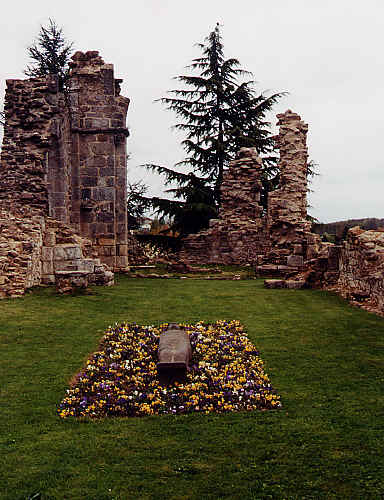
There can be no doubt that when Richard I died the population of England would have had mixed feelings about him. All would agree that he was fearless, either in single combat or as a leader of men in pitched battle.
Some would have been proud that their king was one of the most outstanding commanders during the Third Crusade and had come close to retaking Jerusalem. Additionally, the ruling elite and most English folk must have smiled at the thought that Richard was feared by the French and other countries in Europe.
Cost of crusade
The fond memories of Richard might have been tainted by the cost of his escapades. For a Christian country a Crusade could be looked upon as something that would bring benefit in their afterlife to those who took part in it. But what of the cost involved? Bringing together and transporting an army to the Holy Land meant that a huge sum had to be raised. This fell mostly on the major landowners but they in turn taxed their tenants, so the overall cost fell on the whole population.
Added to this was the enormous sum raised for the ransom demanded by the Holy Roman Emperor for the release of Richard when he was imprisoned. Once again, the cost fell on the whole population, as the ransom money was raised in a similar way to the funds for the Crusade. More cash was extracted from England to pay for the men and equipment needed to defend Richard’s possessions in France.
Absent ruler
During the whole of his reign Richard was in England for only a few months. The rest of his time was taken up with the Crusade, a spell in captivity and fighting to secure his lands in France. He did take care to leave England in safe hands, with various loyal, capable and trusted men running the country under the overall supervision of Eleanor of Aquitaine.
England survived but it would have prospered had not Richard kept draining it of cash. Therefore, it could be argued that it survived despite him and would have been a much richer country by 1199 had Richard not been such a dashing man of his time.

